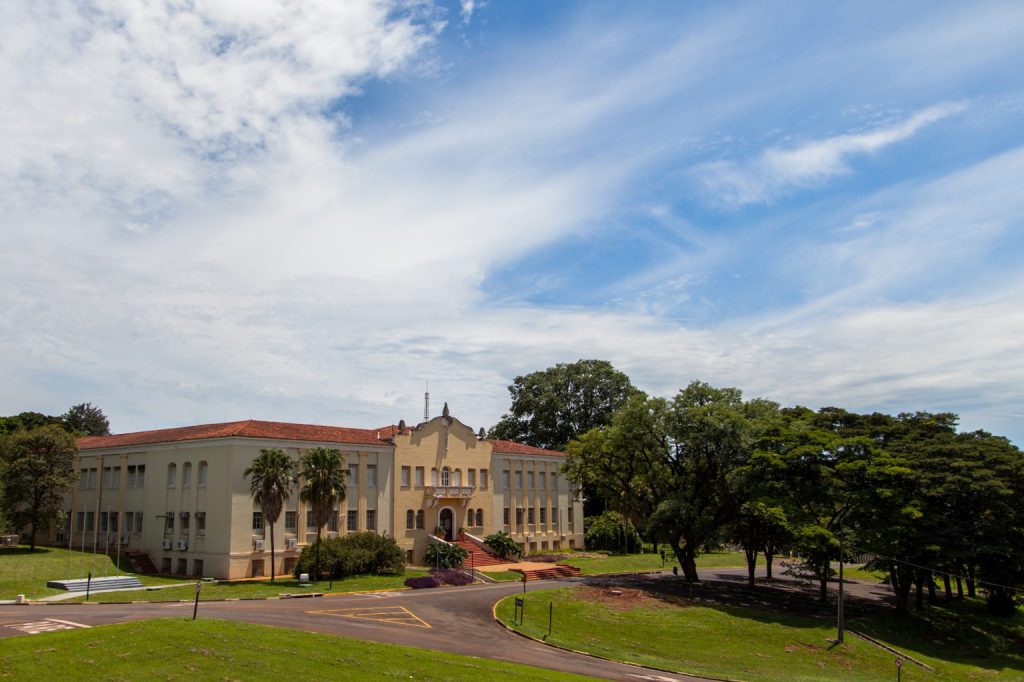News
FAPESP and São Martinho select FCAV Unesp Jaboticabal as the headquarters of the new Engineering Research Center (CPE) Phytosanity

FAPESP and São Martinho – a sugar and alcohol company – set up a research center for pest and disease control in Jaboticabal.
FAPESP and São Martinho – one of the largest companies in the sugar and alcohol sector in Brazil – selected the University of Agricultural and Veterinary Sciences of Unesp, in Jaboticabal, as the headquarters of the new Engineering Research Center (CPE) aimed at control pests and diseases that affect sugarcane plantations.
With an expected investment of R$ 8 million in five years, the Research Center for Plant Health Engineering in Sugarcane aims to develop strategies against pests and diseases of sugarcane through biological and behavioral control. Both techniques use fungi, bacteria and pheromones (substances that attract pests), for example, to protect crops, making it possible to eliminate or reduce the use of pesticides.
The CPE Phytosanity in Sugarcane will also operate in the area of biotechnology and plant resistance, mainly focused on conventional crossings to improve the cultivar.
Investments will be made through the Engineering Research Centers (CPE) program. FAPESP and São Martinho will invest R$ 4 million each in resources for the new research center. The university’s economic compensation will be offered in the form of salaries for researchers and support staff, infrastructure and facilities. The program is valid for five years and can be extended for another five years.
“We are confident that the interaction between industry and university will generate good results for the economy and society. São Martinho has innovation as one of its main pillars of development. Our expectations for the project are high, with the potential to create a new innovation ecosystem in the country ”, says Walter Maccheroni, Innovation Manager at São Martinho.
With more than 300 thousand hectares of harvest area and an approximate crushing capacity of 24 million tons of sugarcane, São Martinho is one of the largest companies in the sector in the country.
Four problems on the rise
“Our goal with the new center is to understand the whole biological, ecological and epidemiological aspect of pests and diseases and, with that, to advance in control methods that seek innovation. This is in a sector that already favors biological control as the main control tool ”, says Odair Aparecido Fernandes, professor at the University of Agricultural and Veterinary Sciences at Unesp in Jaboticabal and researcher responsible for the new CPE.
São Martinho defined the disease known as cane wilting syndrome, the cane beak (Sphenophorus levis) and the hairy caterpillar (Hyponeuma taltula) as research focuses.
In addition to the three common problems in sugarcane crops throughout Brazil, the control of the stable fly (Stomoxys calcitrans) was also listed as a priority. In spite of not being a pest in the sugarcane fields, the larvae of this species of fly develop in the straw of the cane field when it receives irrigation of vinasse. With the proliferation, they attack cattle in neighboring pastures, causing damage to cattle ranchers mainly in the west of the State of São Paulo, in Mato Grosso do Sul and in Goiás.
Always innovate
Fernandes points out that the four pests or diseases that will be studied at the new center have resumed prominence in recent years as they are related to more advanced environmental planting techniques, which do not involve burning straw.
“Not burning the straw that covers the soil is very important from an environmental point of view. The advancement of the sugarcane planting and harvesting system was essential from an environmental point of view, but the side effects are the resurgence of these pests and diseases. The center’s main objective is to innovate in biological control so as not to have to resort to old tools ”, says Fernandes.
The CPE will have a team of 31 researchers formed by the Unesp group from Jaboticabal and partners from different institutions, such as Agronomic Institute of Campinas (IAC), Paulista Technology Agency (APTA), Cooperativa Agroindustrial (Coplana), Federal University of São Carlos (UFSCar), Ituverava Educational Foundation and University of Franca.
“We seek to bring together entomologists, cytopathologists and researchers linked to education and technology transfers. In addition to scientific development, it will be essential to transfer knowledge to the productive sector and to universities ”, says Fernandes.
FAPESP has already implemented 11 CPEs in partnership with companies such as Shell, Koppert, Equinor, GlaxoSmithKlein, Natura, Embrapa, among others. More information about the centers can be found at http://www.fapesp.br/cpe/.
By Maria Fernanda Ziegler
Souce: Agência Fapesp




